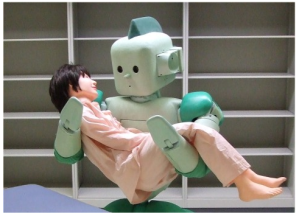 Pay It Forward (PIF) for Business event took place on Monday, July 1 at 3110 Lounge Main Street in Santa Monica. It was organized by Your Office Agent. PIF is about bringing the best companies in Santa Monica to give free advice and help grow small and medium sized businesses. It was the 4th PIF since Dec 2012, and it was Free of Charge. The focus has been from entrepreneurs to tech. Every PIF has a giving wall, where people post their offerings to the community or just tell about their products and services. It was a vibrant networking environment. Thank you to all 450 people for paying it forward!
Pay It Forward (PIF) for Business event took place on Monday, July 1 at 3110 Lounge Main Street in Santa Monica. It was organized by Your Office Agent. PIF is about bringing the best companies in Santa Monica to give free advice and help grow small and medium sized businesses. It was the 4th PIF since Dec 2012, and it was Free of Charge. The focus has been from entrepreneurs to tech. Every PIF has a giving wall, where people post their offerings to the community or just tell about their products and services. It was a vibrant networking environment. Thank you to all 450 people for paying it forward!
My group Santa Monica New Tech (SMNT) was invited to this event. We are a community group of 1800+ members who meet to demo cool technology from local startups, give feedback and network. SMNT had a table where we displayed several examples of technology and its timeline: laptops from 5 years ago, 3 years ago and 1 year ag0. We invited everyone interested in new technology to our events. Our offer was one free ticket to our demo/feedback event on July 24 for those who stopped by our table at PIF4! We also told about volunteer opportunities in tech, see below.
Four generation OS laptops have been manufactured since 2007 and distributed to children in schools around the world. Check out the map olpcmap.net with all OLPC projects, volunteers and XOs.
There are only 4 XO machines are available for now:
XO-1, XO-1.5, XO-1.75 and the new XO-4 Touch laptop.
XO-3s were built, they are basically a Sugar tablet (no keyboard), but not sold.
The XO-4 (touchscreen and keyboard) seems to be more popular.
XO-4 Touch has a few customers, including unleashkids.org.
“Unleash Kids” being the brand new all-volunteer campaign Mike Lee, Christoph Derndorfer, Bill Stelzer, Adam Holt and many others just began to create video documentary live interviews every 2 weeks, so the story of a new country’s OLPC-like work gets out there far more intimately! Unleash Kids, an all-volunteer non-profit group, will also be selling individual XO-4 Community Kits to people like Peace Corps / Makers later this summer, while directly supporting some very cool Haiti deployments.
Learn more on FB http://faceb ook.com/unleashkids
ook.com/unleashkids
Watch bi-weekly interviews of different OLPC countries http://youtube.com/unleashkids
OLPC’s Miami office will also be selling an Android tablet at Walmart under the name “XO Learning Tablet” as some point soon we’re told. http://olpcnews.com
OLPC grassroots is seeking tech volunteers to work on technology for education! Tech volunteers are needed to help testing the new http://schoolserver.org which is getting a lot of traction, and amazingly so after volunteers took OLPC’s bitrotted XS 0.7 and turned it into a real community product with growing users on every continent (XS Community Edition!)
To learn more about OLPC and Sugar global community, please read http://planet.laptop.org and http://olpcMAP.net.









